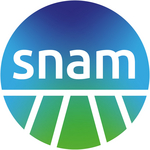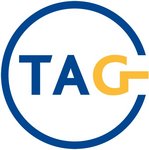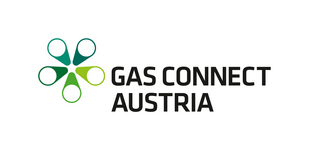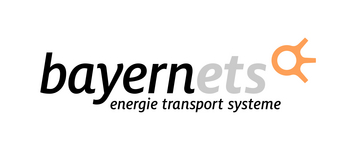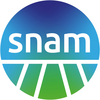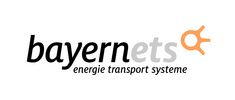General description of the SoutH2 Corridor
The SoutH2 Corridor project is a 3 300 km dedicated hydrogen pipeline corridor led by the TSOs: Snam, TAG, GCA and bayernets, who each individually submitted Project of Common Interest (PCI) applications under the EU Commission’s TEN-E regulation in December 2022. The corridor connects North Africa, Italy, Austria and Germany, and is enabling the supply of low-cost renewable hydrogen produced in the South to key European clusters of demand.
The development of the SoutH2 Corridor, which is part of the European Hydrogen Backbone, will guarantee security of supply and is crucial for the development of an interconnected and diversified hydrogen backbone. With a hydrogen import capacity of 4 Mtpa from North Africa, the corridor could deliver more than 40% of the REPowerEU import target. The initiative is centred around the utilisation of existing repurposed midstream infrastructure to transport hydrogen, with the inclusion of some new dedicated infrastructure where necessary. A high proportion of repurposed pipelines (>70%) will enable cost effective transportation, whilst access to favourable renewable hydrogen production locations (wind and solar) in North Africa will enable competitive production, ultimately benefitting the final user.
The corridor has gained endorsement from institutions as well as the strong support from companies across the entire value chain and along the whole route from Italy via Austria to Germany. Renewable hydrogen would be largely produced in North Africa, for which the partners have collected signed letters of support from producers intending to produce c. 2,5 Mtpa of renewable hydrogen. It would then flow North, serving the hard-to-abate demand clusters of Italy (e.g. Augusta, Taranto and northern Italy), Austria (e.g. Styria, Vienna and Linz) and Germany (e.g. Burghausen and Ingolstadt). Transportation of domestic production in each of the member states would also be facilitated through the SoutH2 Corridor. Additionally, the realisation of the SoutH2 Corridor plays an essential role for the establishment of security of supply with hydrogen due to the connection to storage facilities along the route.
The SoutH2 Corridor, which is expected to be fully operational as early as 2030, consists of the following individual PCI project candidates:
- “Italian H2 Backbone” promoted by Snam Rete Gas
- “H2 Readiness of the TAG pipeline system” promoted by TAG GmbH
- “H2 Backbone WAG + Penta-West" promoted by Gas Connect Austria GmbH
- “HyPipe Bavaria – The Hydrogen Hub” promoted by bayernets GmbH
Benefits of the SoutH2 Corridor
- Significant transport capacity for hydrogen while utilising mainly existing infrastructure
- Repurposed natural gas pipelines are the most effective, competitive and sustainable transport method
- Providing Central Europe with significant amount of affordable energy by unlocking very low-cost green hydrogen with a vast potential
- Serving the largest hydrogen demand clusters in central Europe
- Enables CO2 savings in all countries along the entire route
- Important contribution to achieving European and national climate goals
- Foster security of supply with hydrogen through connections to storages along the entire route
- Diversification of import routes
Italian H2 Backbone
The project concerns the development of a hydrogen backbone stretching all the way from the entry point in Sicily to the export points with Austria and Switzerland, enabling the transport of hydrogen produced in Northern Africa and Southern Italy to the main Italian and European consumption areas, which are integral parts of the European Hydrogen Backbone (EHB).
The Italian H2 Backbone is composed of around 2300 km of pipelines (73% repurposed/27% new built) and several hundred MW of compressor stations, expected to become dedicated hydrogen assets by 2030. With an import capacity of circa 450 GWh/day from North Africa, this project is a major European renewable hydrogen import artery, serving Italian demand clusters and with a capacity to export circa 170 GWh/day to Austria and beyond.
Due to its strategic location, the Italian H2 Backbone is a key asset for the import of large quantities of renewable hydrogen produced in North Africa. Snam is in ongoing collaboration with GW-scale hydrogen producers in North Africa and has collected signed letters outlining an intent to produce circa 2,5 Mtpa of renewable hydrogen. As of January 2023, Snam has been actively involved in North Africa following the finalisation of its partnership for gas pipelines between Algeria and Italy.
The project has gained the endorsement of the Italian Government with signed letters from two Ministries.
Link to website: Dedicated section of Network Development Plan
TAG's "H2 Readiness of the TAG Pipeline System" project connects the H2 pipeline at the Italian-Austrian border (Arnoldstein) with those at the Austrian-Slovakian border (Baumgarten).
The project consists of repurposing one of the three existing CH4 pipelines of the TAG system to 100% hydrogen, with all associated facilities such as compressors, metering stations and offtake stations, between Arnoldstein and Baumgarten. There it will be connected to GCA's H2-WAG pipeline within Austria to supply central Austria and southern Germany, and to EUSTREAM's H2 pipeline.
The system is optimised to transport hydrogen in "H2 forward flow direction" with an import capacity to Austria of about 168 GWh/day from low-cost production areas in North Africa to the largest hydrogen demand clusters using mainly existing infrastructure.
The bi-directional design of TAG's 380 km H2 pipeline enables IT, AT, DE, SK, CZ and all CEE countries to develop a common hydrogen market, promoting competition and security of supply.
It serves as the basis for the Austrian local H2 network (DSO level) to meet the local needs of customers in Austria and is designed for high availability.
The project is supported by numerous companies and demand regions along the corridor, potential producers and the Austrian Federal Ministry for Climate Protection, Environment, Energy, Mobility, Innovation and Technology. As part of the SoutH2 Corridor, it has received a joint letter of political support from the energy ministers of Austria, Germany and Italy, signed by the federal ministers.
The H2 pipeline is part of the Austrian Coordinated Network Development Plan and is expected to be fully operational by 2030.
You can find more Information on our website: The Company - TAG GmbH (taggmbh.at)
H2 Backbone WAG + Penta-West
The project “H2 Backbone WAG + Penta-West” enables bidirectional cross-border hydrogen transport possibilities between Slovakia and Austria as well as between Austria and Germany and allows for taking over hydrogen ariving via the TAG-hydrogen pipeline systems in the Baumgarten node to the extent of 150 GWh/day. Therewith, regions with a high potential for hydrogen production can be connected with regions of high demand making this type of energy available to the European and Austrian industry and economy in a sufficient and affordable manner.
As an integral part of the European REPowerEU initiative, the project contributes significantly to the establishment of European hydrogen import corridors. The project is supported by the Federal Ministry for Climate Action, Environment, Energy, Mobility, Innovation and Technology as well as from stakeholders from industry and business. Numerous leading industrial companies in Austria and companies along the entire hydrogen value chain from North Africa to Bavaria also endorse the project.
Link to project website: https://h2backbone-wag-pw.at/
HyPipe Bavaria – The Hydrogen Hub
HyPipe Bavaria – The Hydrogen Hub will be laying the foundation for the indispensable Bavarian hydrogen network, to be completed by 2030. Our project is an important element in the European Hydrogen Backbone (EHB) and connects regions with hydrogen demand and storages with numerous production regions both within Germany and abroad. We are setting the course for importing hydrogen to Bavaria and are thus shaping the European hydrogen hub.
Implementing the Bavarian hydrogen network as fast as possible is an essential prerequisite for establishing import routes from Southern and Eastern Europe for the German hydrogen market. We provide a high-performance import (with 6 GWh/h capacity) point between Austria and Germany. National network connections with the west and north also offer Germany further flexible transmission opportunities and import prospects from Northern and Western Europe.
Within the current decade, the secure supply of climate neutral and affordable hydrogen will become essential for companies in the Bavarian chemical triangle and in Ingolstadt region. We are connecting green hydrogen sources with hydrogen customers, who are themselves highly competitive on the global market. An effective network connection will play a decisive role in ensuring the gradual transformation of industrial sites and also power stations. This is the only way to enable processes and turbines to be operated with hydrogen so that we can successfully move away from fossil energy.
From 2025, the first pipeline section with a length of 14 kilometres will be commissioned in the Bavarian chemical triangle – followed by further regional project building blocks near Ingolstadt. The network will be 300 kilometres long in the year 2030.
